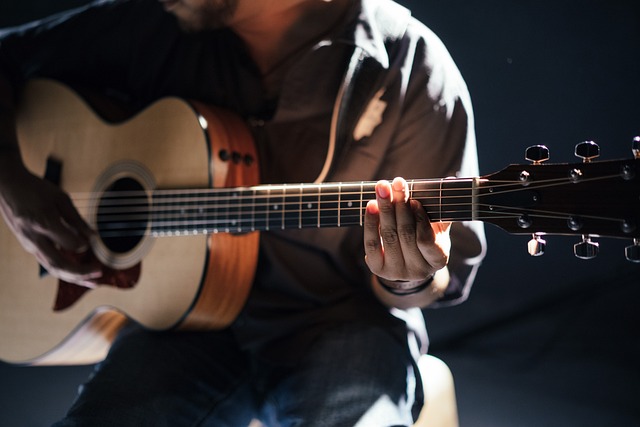Strumming vs Striking Keys Is Guitar Easier Than Piano
Embarking on a musical journey often starts with a pivotal question: which instrument to learn? Today, let's pluck some insights into the age-old debate of guitar vs. piano, especially focusing on the ease of learning through guitar lessons.
The Starting Point: Beginner's Perspective in Guitar Lessons

Imagine standing at a crossroads, one path leading to a guitar, the other to a piano. Guitar lessons often appear as the less intimidating route, with a gentler learning curve at the beginning.
Initial Gratification in Guitar Playing
Picking up a guitar, learning a few chords, and strumming a simple tune can be quite gratifying. It's like the first sprint in a marathon, giving you the thrill of quick progress.
The Anatomy of Learning: Guitar vs. Piano
Delving into guitar lessons compared to piano involves a deeper look at how each instrument is played. Where the piano presents a visual layout of notes, the guitar requires a blend of finger positioning and strumming techniques.
Visual vs. Tactile Learning
While piano keys offer a clear visual guide to scales and chords, guitar lessons involve a more tactile approach. It's a dance of the fingers on the fretboard, often relying on muscle memory.
Chord Progressions: Guitar Lessons' Melodic Patterns
One of the joys of guitar lessons is the ease of playing chords and creating melodies. With a handful of chord shapes, you can play a wide variety of songs, much like having a key to unlock numerous musical doors.
The Versatility of Guitar Chords
In guitar lessons, learning a few chord shapes can open up a world of songs. It's a bit like learning a new language and suddenly being able to communicate in countless new ways.
The Physicality of Playing: Guitar vs. Piano
The physical aspects of playing the guitar and piano differ significantly. Guitar lessons often focus on mastering strumming and fretting, which can be less physically demanding initially compared to the wide range of motion required by piano playing.
Building Dexterity and Strength
Guitar lessons involve developing hand strength and finger dexterity, which is crucial for chord transitions and fingerpicking techniques. It's akin to a gymnast training their flexibility and strength.
The Rhythm and Harmony of Music
Understanding rhythm and harmony is integral to both instruments. However, guitar lessons might offer a more straightforward approach to grasping these concepts, especially when starting with basic strumming patterns.
The Harmony of Guitar Playing
The guitar naturally lends itself to harmonious playing. In guitar lessons, you'll learn to create rhythms and harmonies simultaneously, like juggling while keeping a steady rhythm.
Accessibility and Portability: Guitar's Advantage
One practical aspect where guitar lessons shine is in the accessibility and portability of the instrument. Guitars are generally more affordable and easier to carry around than pianos, akin to choosing a bike over a car for a quick trip.
The Guitar's Companionable Nature
The portability of the guitar makes it a great companion for various settings, from beach bonfires to cozy living room gatherings. It's an instrument that travels with you, ready to make music wherever you go.
The Cultural Context in Singapore: Guitar Lessons' Popularity
In Singapore's diverse music scene, the guitar holds a special place. Its popularity in various musical genres makes guitar lessons a common choice for budding musicians in the Lion City.
Case Study: Guitar's Influence in Singapore's Music Education
Recent studies in Singapore have shown an increasing trend in young musicians opting for guitar lessons due to the instrument's versatility and cultural relevance (Source: Singapore Music Trends).
The Digital Age: Online Guitar Lessons in Singapore
The rise of digital learning platforms has made guitar lessons more accessible than ever in Singapore. Online lessons offer flexibility and a vast array of resources, ideal for the busy lifestyles of professionals.
Embracing Technology in Music Learning
Online guitar lessons provide interactive learning experiences, from video tutorials to app-based practice sessions. It's a modern spin on traditional music education, catering to the digital-savvy generation.
Conclusion: The Guitar as a Choice for Musical Beginners
In sum, while both guitar and piano have their unique challenges and joys, guitar lessons might offer a more approachable and flexible starting point for beginners, especially in the context of Singapore's vibrant music scene.
Are you intrigued by the prospect of learning the guitar? LessonPlan offers comprehensive guitar lessons tailored to fit your schedule and musical aspirations. Whether you're a complete novice or looking to hone your skills, our courses are designed to make your musical journey enjoyable and rewarding. Start strumming your way to mastery with us today!


